|
11/19/16 I don't often get to launch a whole new blog and a whole new project (though I have done a few). So this is pretty exciting. Strider (TM) is now a thing. No I don't have backing for the project yet, and any physical work will have to wait until the resources are in place. But the bottom line is that I want one so it's going to happen. Sooner or later.
And yes I'm in the process of applying for a trademark on Strider (TM) and Sport Adventure Vehicle (TM) (yes I know BMW owns the acronym SAV which stands for Sport Activity Vehicle, but this is distinct and different). This is most likely going to be a separate project from Palatov Motorsport, but at least the development and design will be done by the company. Production details will depend on whom I end up with for investors/partners. The reason for this is that I really belive that if done right Strider(TM) could see volumes in the 500/year range. The most I ever see Palatov doing is 50 cars a year, because we want to stay a development company. So some kind of manufacturing partnership arrangement will eventually be needed. Why do I think this might become so popular? In short, because I believe there is a huge hole in the market that nobody is addressing. And the reason for that is that it's very hard to do this kind of vehicle. Some very clever engineering and manufacturing solutions will need to be applied (predictably I have a few in mind aready). What makes me think that I can do it? Well, I did build a 430hp, 1,100 lb AWD car that won Pikes Peak unlimited on first try. And a 660 hp, 2,000 lb street legal, emissions compliant two seater that won Pikes Peak open class on first try. Both meeting Pikes Peak safety requirements at their light weight. So yes, it's true, I've never done an off-road car. Yet. But before the D1 I've never done a Pikes Peak winning trackday car either. There were many armchair engineers telling me why 80" wheelbase is too short, chain drive is too unreliable, and so on. Most people's reaction to something new is 'how do you know it's going to work?'. My reaction is 'how do you know it's not going to work? - let's try it! and see what we can learn'. So here we go, again. So what is a Strider(TM)? Well, the best way I can sum it up is 'Sport Adventure Vehicle' (TM) - yes the TM stuff is annoying but I have to do this for now :) The basic mission is to go anywhere - from a week camping or hunting in the wilderness to a romp on a racetrack to daily driving for work/groceries.
There are lots of Adventure Vehicles. Typically they are converted vans, trucks or SUVs. You start with a $40K-ish standard vehicle in the 5,000+ lb range, spend another $40-100K on a conversion and what you end up with is a lumbering AWD beast that is essentially an off-road RV. Don't get me wrong, some of these things are very capable of offroading as long as you do it slowly. And you can bring a lot of stuff. But they're heavy, slow, gas-guzzling (i.e. need huge tanks for any kind of useful range), and it's not something you'd drive every day. Definitely not even one lap of a racetrack. And forget about 'treading lightly'. But, at least they can be driven on the road so no need for trailer or truck to pull it, nor the hassles associated therewith. You do still have to park them somewhere, and it's not in the garage.
Then there are ATVs. This segment has been exploding, with everything from top name brands going up to $40K to very low cost imports. Top ATVs are in the 1,500 lb range, anything from 50 to 150 hp, and the better ones are at least $20K. These vehicles are very capable offroad but usually lack standard weather protection (most have optional canvas) and cannot be driven on the street. Yes, some do end up with license plates but given 40-50mph top speed their street utility is pretty limited. Most do require a trailer, a tow vehicle, and a place to store the whole mess which easily adds $20-50K+ to the real cost. On the plus side, due to light weight the maintenance is fairly low.
At the top of the offroad pyramid are dedicated race vehicles which range from sandrails and rockcrawlers on the lower end to Trophy trucks and Ultra 4 ultimate monsters. They all tend to be in the 5,000-8,000 weight class, with higher end vehicles boasting upwards of 800hp and $150K+ price tags. These are the beasts that rule the dunes, Baja 1000, Dakar and King of the Hammers races. Some of them are very impressive - I saw an Ultra 4 in person recently and was basically in awe at the quality of design and execution. But it comes at a price. Definitely no driving any of these on the road, so the trailer/tow/storage extra cost applies. Maintenance isn't cheap either. When you hurl 5,000+ pounds across rough terrain at speed, propelled by an 800hp+ motor, things will need replacing often. Expensive things.
So where does the Strider(TM) come in? Below are a couple comparisons to put it in context. One way to think of it is as a road-going ATV with 250+ hp, weather protection, climate control and storage for gear. Or, it can be described as a cross between ATV, Trophy truck and Adventure Vehicle. Hence the 'Sport Adventure Vehicle(TM)' designation. Target pricing is $75K for the base 250hp, 1,600 lb version. The first comparison is with the orignial Hummer H1, of which the Strider is essentially an 8/10 scale 'replica'.
Yes, the Strider is much smaller. More dramatic is the weight difference - 8,000 lb for the Hummer and 1,600 lb for the Strider. Why do I think the weight is realistic? Well, consider a comparison to the 4-seat Polaris RZR, which is a 1,565 lb vehicle.
And over the years I've learned a thing or two about building cars that are very lightweight and yet very strong. If I hit the target weight, it will be 400 lbs lighter than a Lotus Elise. I fully expect the base Strider to be faster than an Elise around a racetrack, with only a tire swap to R compounds. It's quite a claim for an offroad machine but I really think it's doable. For detailed specs see the '?' page of this blog. Another reality check was some initial CFD, which shows that with a 250hp engine a top speed of about 120mph is achievable. It's even possible to produce a modest amount of downforce with some attention to detail.
All this said, there are many challenges in making this car a reality. I'm confident that with enough development time I can meet or even exceed the design goals. However this will take considerable resources. So I am now looking for investors, lead customers and/or manufacturing partners who would be willing to help fund the design and development. As I mentioned at the start, this is intended to be a project separate from Palatov Motorsport, since we are mostly interested in creating it rather than volume manufacturing. So ownership of a substantial share of the project by an investor is within the realm of possiblity. Contact me if interested. 03/14/17 The lack of posts is not due to lack of activity. It's just that at this point the activity involves primarily discussions, of which there have been many, as well as research and further concept refinement. It's coming along. One post-worthy item is that we now have our Industrial Design intern lined up for this summer, and while on-site work doesn't start till later this spring, the first remote project is doing some sketches and then preliminary CAD for the Strider bodywork. We are of course restricted somewhat to making it 'look like' the H1 but that doesn't mean it has to be exact. In fact I'd rather push the design in as much of an original direction as possible while staying (hopefully) within the letter of the low-volume law. Below are some initial sketches. Maika is doing a great job so far!
And yes I know the seven-bar grille is a Jeep trademark, we won't be using it on the final product. This is just first concept. The reason we sketched it this way is to have a starting point and a reference for subsequent iterations. When you look at the sketches keep in mind that the pictured vehicle is same wheelbase and width as a Corvette, with a target weight of 1,600 lbs and power in the 160-400+ horsepower range. To put yet another comparison on the table, it's 400-800 lbs lighter than a Group B rally car, with similar power and more suspension travel. For those not familiar with Group B, this is how they do. Did. The class got banned for basically being too fast. I am fortunate to know a guy who has a bunch of them, and have driven a couple (slowly), so there's good basis for reference. The suspension designs are particularly informative.
Many miles to go before it's real, but we're going. I'm currently working with some people on the funding. If you're interested in being an investor or an early customer - let me know. 04/19/17 While we are looking for funding and doing things like market research, business planning and so forth, we're also looking down the road beyond the first vehicle. The goal, as with all of my other designs, is to develop a 'platform' - a set of components, assemblies and technologies which can be used to build a variety of vehicles. The reason for doing the first Strider as a Hummer 'replica' is to comply with limited-volume laws, which don't allow original designs at this time (not sure why and it's frustrating, but this is the reality we have to live in). This would allow us to legally sell complete cars for road use rather than just kits. We're now doing more concept development, since we want the car to have as much of its own identity as possible while staying within the constraints. As an interesting follow-on to the Hummer H1 replica would be a scaled down 'replica' of Volvo C303, which is a fairly large but extremely offroad-capable vehicle.
The version I'm contemplating would basically use the same Strider chassis, but a bit shorter wheelbase and with the bodywork on top. It would have roughly same footprint as a Jeep Wrangler with wide tires.
Once the first car is done, this type of follow-on design can be delivered very quickly. While for the reasons listed above the initial efforts will stay within this theme, it is always interesting to look at other possibilities that could be pursued if the situation changed or evolved. Several designers have produced concept sketches, which are included below: Romano Gaspari:
Carlos Gomez Periz:
Piotr Moskala:
Very cool. Even though we won't have the resources to produce anything like that for quite some time, it's good to be thinking ahead. Getting back to the Hummer replica version, some of the details we're looking at are things like wheel arch treatment, hood detailing, etc. Our design intern Maika Sylva came up with a couple ideas.
At this point this is mostly ideas and possibilities, though by taking real dimensions and structure into account we are making sure the ideas would be immediately usable if we chose to go that route. It's a process. If you find this site useful or interesting, consider supporting it with a paypal donation in the amount of your choosing to dp@dpcars.net
|
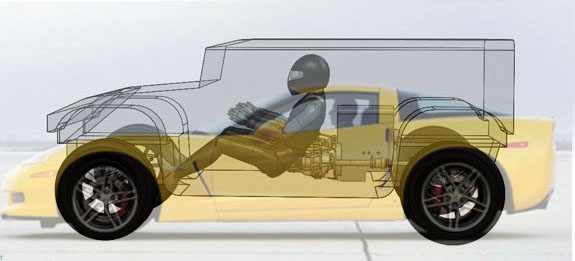
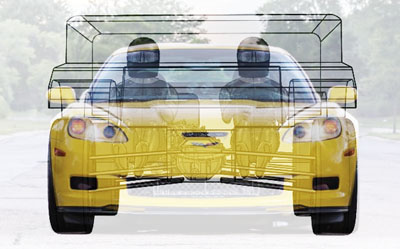


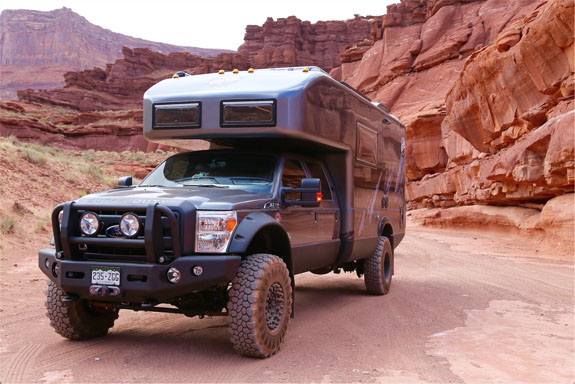

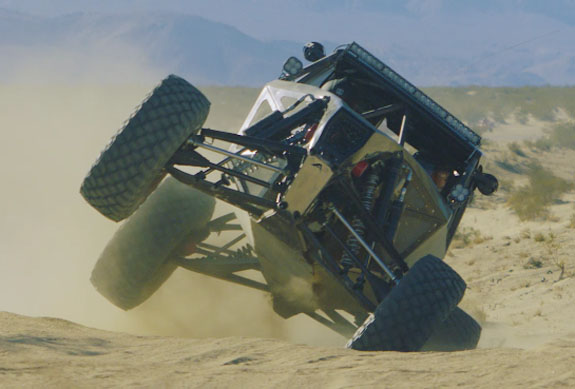
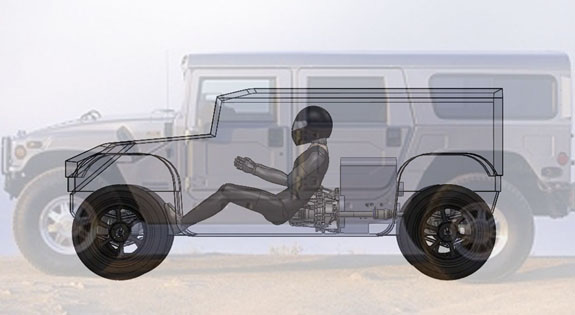
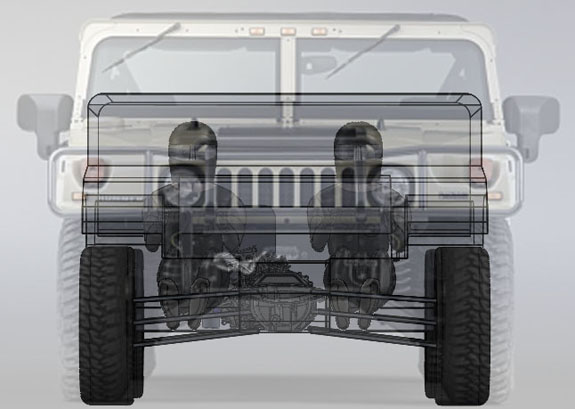


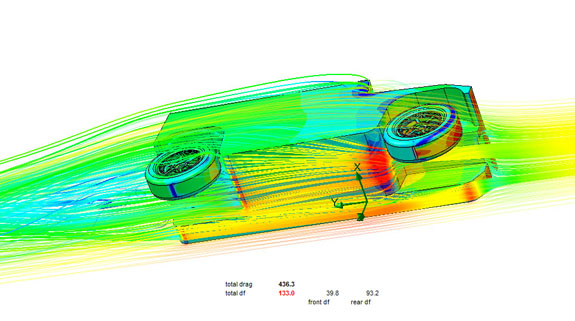

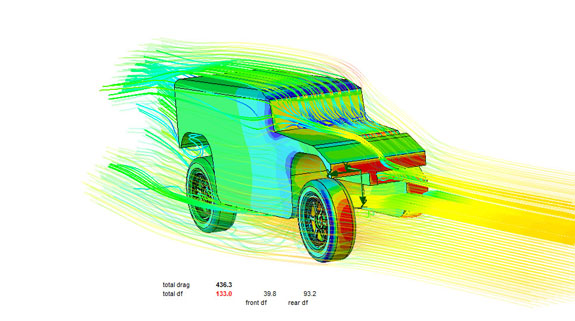
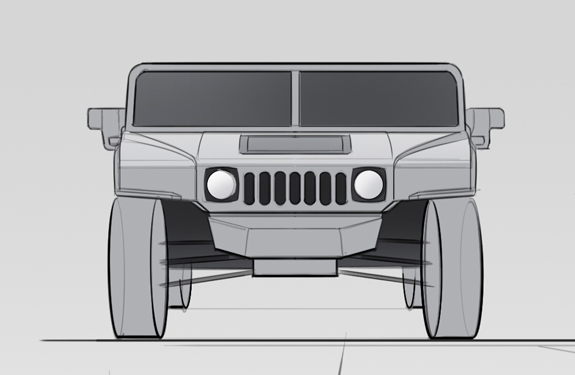
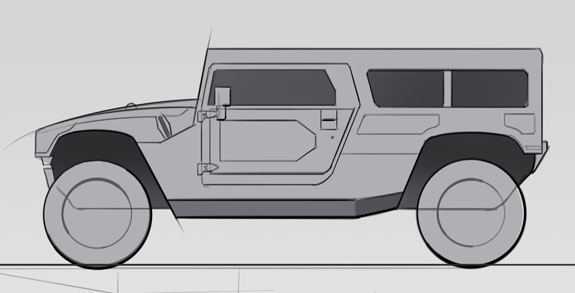

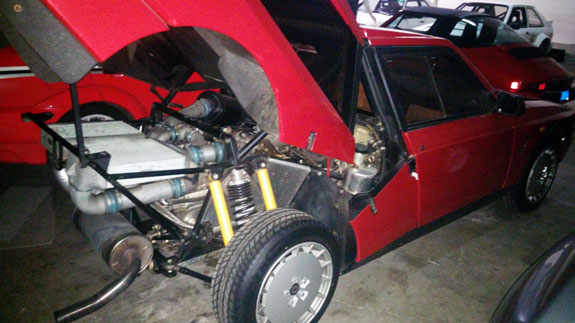
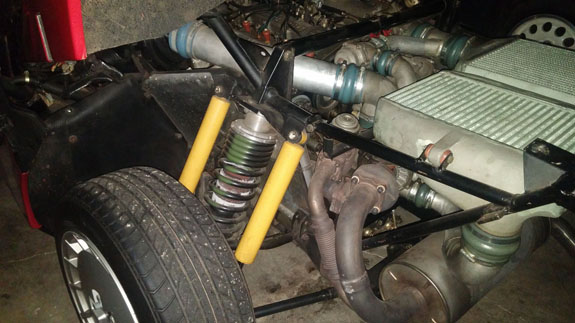

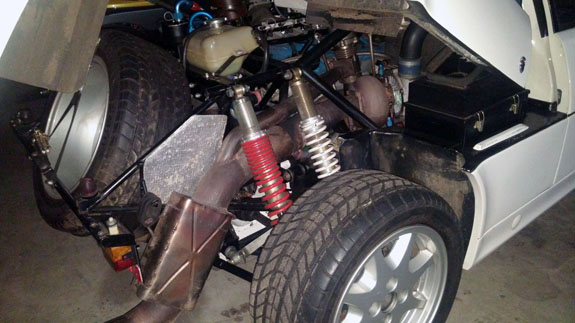

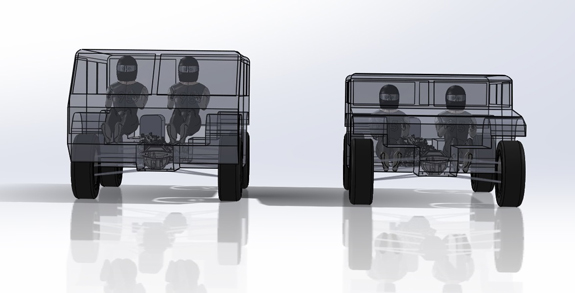
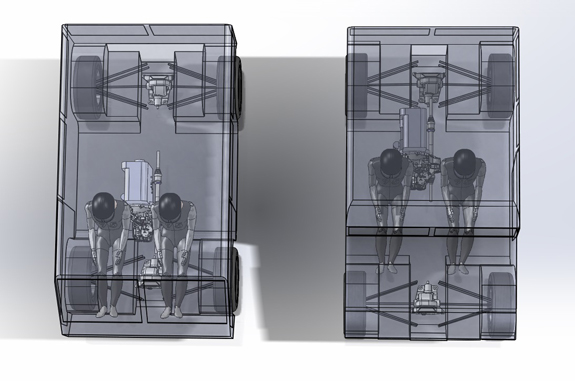

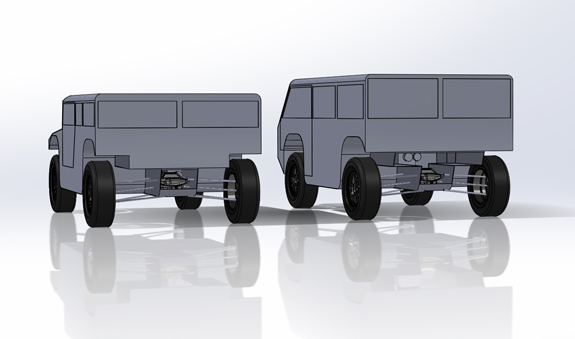
.jpg)
.jpg)
.jpg)
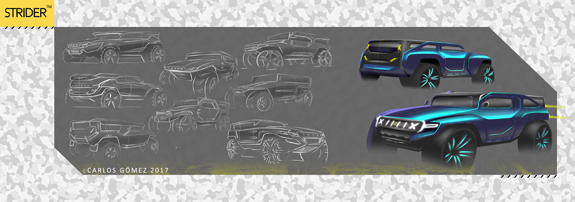
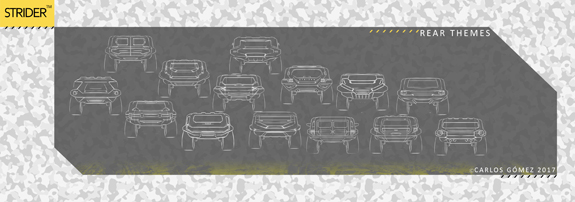

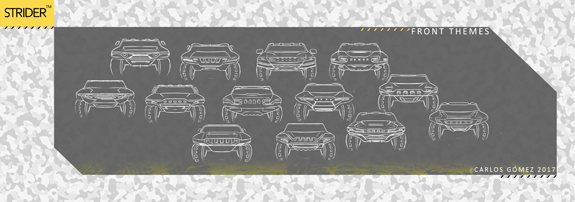
.jpg)
.jpg)
